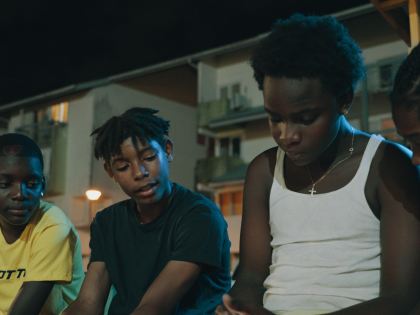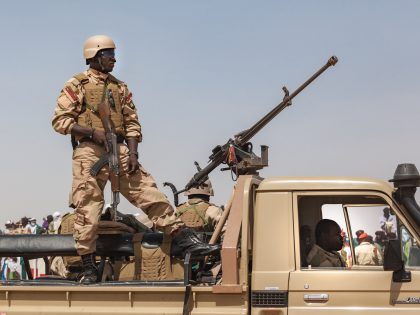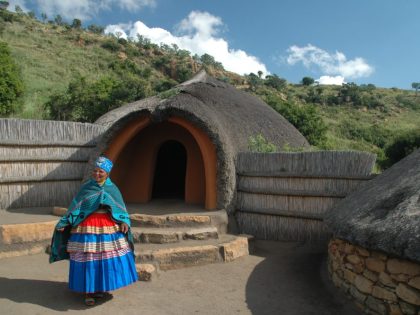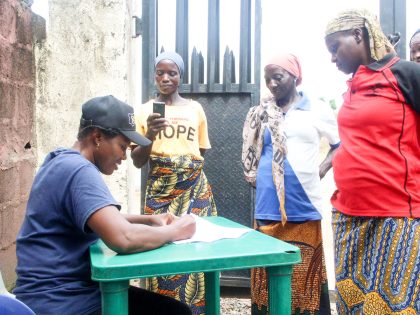Could Angola have prevented its yellow fever epidemic?

Angolan military administers a yellow fever vaccine to a child at 'Quilometro 30' market, Luanda, Angola, 16 February 2016. Credit: Joost de Raeymaeker (EPA)
Angola is in the midst of a yellow fever outbreak that has caught worldwide attention. Between December 5, 2015 and Monday of this week the World Health Organization reported 298 deaths and the majority of these have occurred in the capital city of Luanda. While this is the official figure, the actual number of deaths is likely much higher. Many of those who are ill never make it to a hospital or a health clinic.
The rapid spread of this rare, but deadly, disease — which can be prevented with the administration of a highly effective vaccine — is part of “ordinary,” “everyday” life in post-war African countries. As in post-war Liberia, Sierra Leone or Guinea where Ebola claimed the lives of many in 2014 (and is reportedly rising again), Angola suffers from a shortage of hospitals and hospital beds, clinics, doctors, nurses, trained technicians, vaccines, tests, and testing facilities. Like other countries that have experienced long civil conflicts (Angola’s conflict, which only ended in 2002, lasted for 27 years and was preceded by 14 years of anti-colonial war), the country presently does not have the capacity to deal with “the extraordinary” such as a yellow fever outbreak.
Diagnostic capacity is also weak in post-conflict Angola. An assessment conducted by Norway’s Christian Michelsen Institute (CMI) in 2011 of the ability of health care workers to correctly diagnose a number of common illnesses in Angola produced alarming findings. Using patient simulation cases whereby health workers were asked to make a diagnosis based on a set of common symptoms exhibited by a hypothetical patient, CMI found that half the time, diagnoses by a sample of health workers in Luanda were incorrect.
Two thirds of the time, health workers in Uíge, a city in the northeast of Angola, incorrectly diagnosed simulated cases of acute diarrhea with dehydration, malaria, pneumonia and other “typical” diseases.
The health care system in Angola may be even worse off than many other post war countries because the usual assortment of humanitarian aid from non-governmental organizations and donors that arrives after a conflict have barely materialized. After helping to bring under control a terrible outbreak of Marburg virus, a hemorrhagic fever almost as deadly as Ebola, Medecins Sans Frontières reportedly packed up and closed its offices in Angola in 2007.
In December, 2015, USAID officials in Luanda indicated to me that they were facing budget cuts which would likely affect American aid to Angola’s health sector. Indeed, USAID’s projected budget in Angola for 2017 indicates a reduction of 17% available revenue over the past two years. At the same time, it doesn’t appear that USAID has shifted its funding priorities in response to the recent yellow fever outbreak. Its webpage for Angola — last updated two months ago — makes no mention of support for addressing the outbreak of yellow fever.
The paltry overseas development assistance for post-war Angola is lamentable, but in another respect, the current health crisis is very much a crisis of the Angolan government’s own making. It is a product of lavish spending on the wrong projects, conceived and completed in the wrong order in the 14 years since civil conflict ended in 2002. It is the result of top down decisions regarding public spending priorities by government officials cloistered away in air conditioned offices and luxury residential enclaves. According to the World Bank, health care accounted for only 3.6% of the government’s budget on average from 2011-2015 compared with 6% of the budget in Mozambique and 11% in Sierra Leone, two other post war countries.
As the many public billboards dotted around the city of Luanda are keen to stress, the government has financed new housing projects, built new hospitals, supplied water, and extended and repaired road networks. All of these developments arguably improve public health. But the upgrading of informal urban settlements, rather than building from scratch, would have been more cost effective and benefitted a larger number of residents. Also much government expenditure since the end of the war has been on the symbolic instruments of power rather than on the ordinary necessities of urban life. It has been directed at constructing the new legislature, built to resemble the US Capitol, or the new Palace of Justice, inaugurated in 2012.
The current crisis is also the consequence of a failure to reorganize budgetary allocations when the oil boom turned to a bust last year. In the wake of the collapse in oil prices, foreign currency, which is critical to the purchase of imported goods such as medicines, has dried up. The kwanza has lost a third of its value in relation to the dollar over the last year and informal exchange rates are even lower. Angola’s GDP is half what it was two years ago. But that doesn’t seem to have affected the continued appropriation of a large percentage of the state’s revenue by the elite, while the rest of the country suffers.
Luanda is particularly hard hit by dwindling revenues: a quarter of the country’s total population lives in the capital in overcrowded, informal housing. Many residents lack reliable access to safe drinking water and sanitation is often inadequate. In some areas, garbage collection seems to have ceased. All of these conditions facilitate the rapid transmission of disease. Fiscal austerity means less revenue to construct and repair storm drains, which would help control the breeding of mosquitoes. It means less money for continued improvements to infrastructure such as water distribution and sewerage systems. It means less money to pay for garbage collection, road building, and most of all, convenient, fully staffed, public health clinics with proper labs.
The strains on residents of Luanda (not to mention those living in rural and urban areas in the rest of the country where health facilities are fewer in number and even less well supplied), must be great. Reports of two to three hour commutes to get to the nearest hospital and long waiting periods to be seen by physicians abound. At government expense, seven million people in and around Luanda have received yellow fever vaccinations, but the virus is spreading and the supply of available vaccines is insufficient to cover the rest of the country. Now the virus has been reported in Democratic Republic of Congo and there is a real threat of transmission to Namibia and Zambia. Recently, an article in the Journal of the American Medical Association stated that the yellow fever outbreak could become a “global emergency,” owing to the shortage of vaccines. Not surprisingly, such claims by a respected medical journal have generated a mild moral panic and been repeated by major news media such as The Economist. Sadly, in spite of the high number of deaths, the Angolan government has yet to declare this tragedy even a “national emergency.”



















